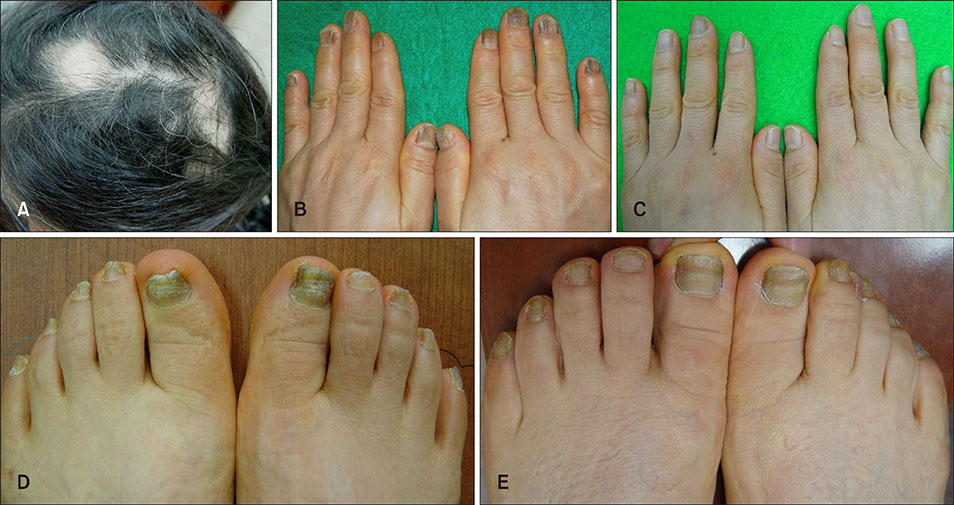Ann Dermatol.
2019 Jun;31(3):359-361. 10.5021/ad.2019.31.3.359.
Twenty-Nail Dystrophy Treated with Hydroxychloroquine in a Patient with Alopecia Areata
- Affiliations
-
- 1Department of Dermatology, Chonnam National University Medical School, Gwangju, Korea. yhwon@chonnam.ac.kr
- KMID: 2444878
- DOI: http://doi.org/10.5021/ad.2019.31.3.359
Abstract
- No abstract available.
Figure
Reference
-
1. Kasumagic-Halilovic E, Prohic A. Nail changes in alopecia areata: frequency and clinical presentation. J Eur Acad Dermatol Venereol. 2009; 23:240–241.
Article2. Sehgal VN. Twenty nail dystrophy trachyonychia: an overview. J Dermatol. 2007; 34:361–366.
Article3. Ochsendorf FR. Use of antimalarials in dermatology. J Dtsch Dermatol Ges. 2010; 8:829–844. quiz 845.
Article4. Xing L, Dai Z, Jabbari A, Cerise JE, Higgins CA, Gong W, et al. Alopecia areata is driven by cytotoxic T lymphocytes and is reversed by JAK inhibition. Nat Med. 2014; 20:1043–1049.
Article5. Alzolibani AA, Rasheed Z, Bin Saif G, Al-Dhubaibi MS, Al Robaee AA. Altered expression of intracellular Toll-like receptors in peripheral blood mononuclear cells from patients with alopecia areata. BBA Clin. 2016; 5:134–142.
Article



